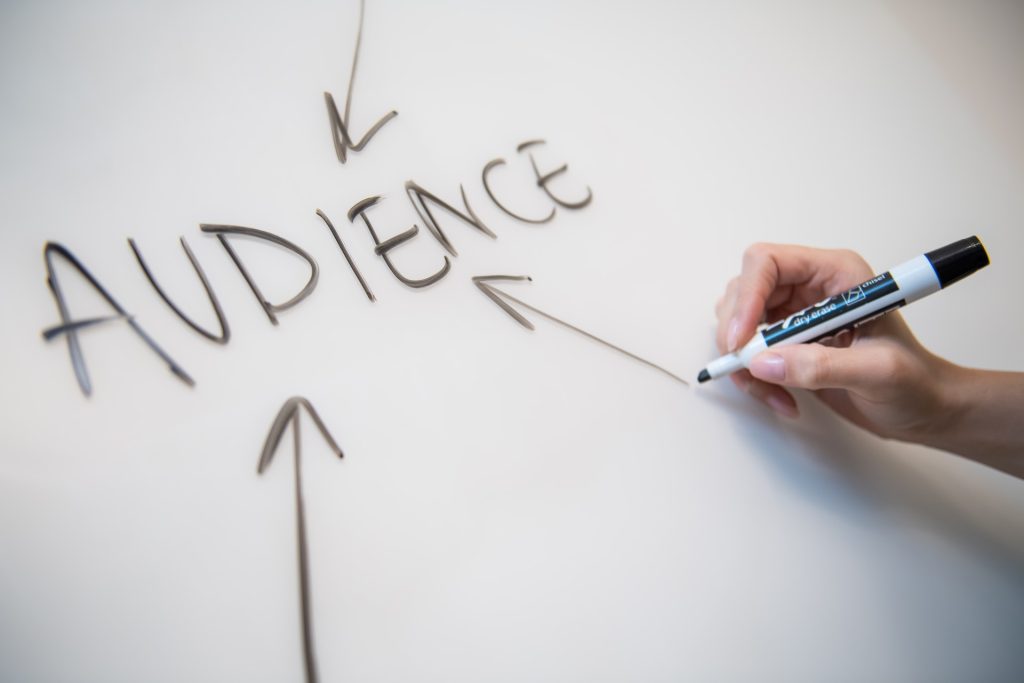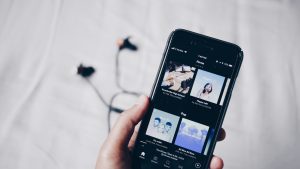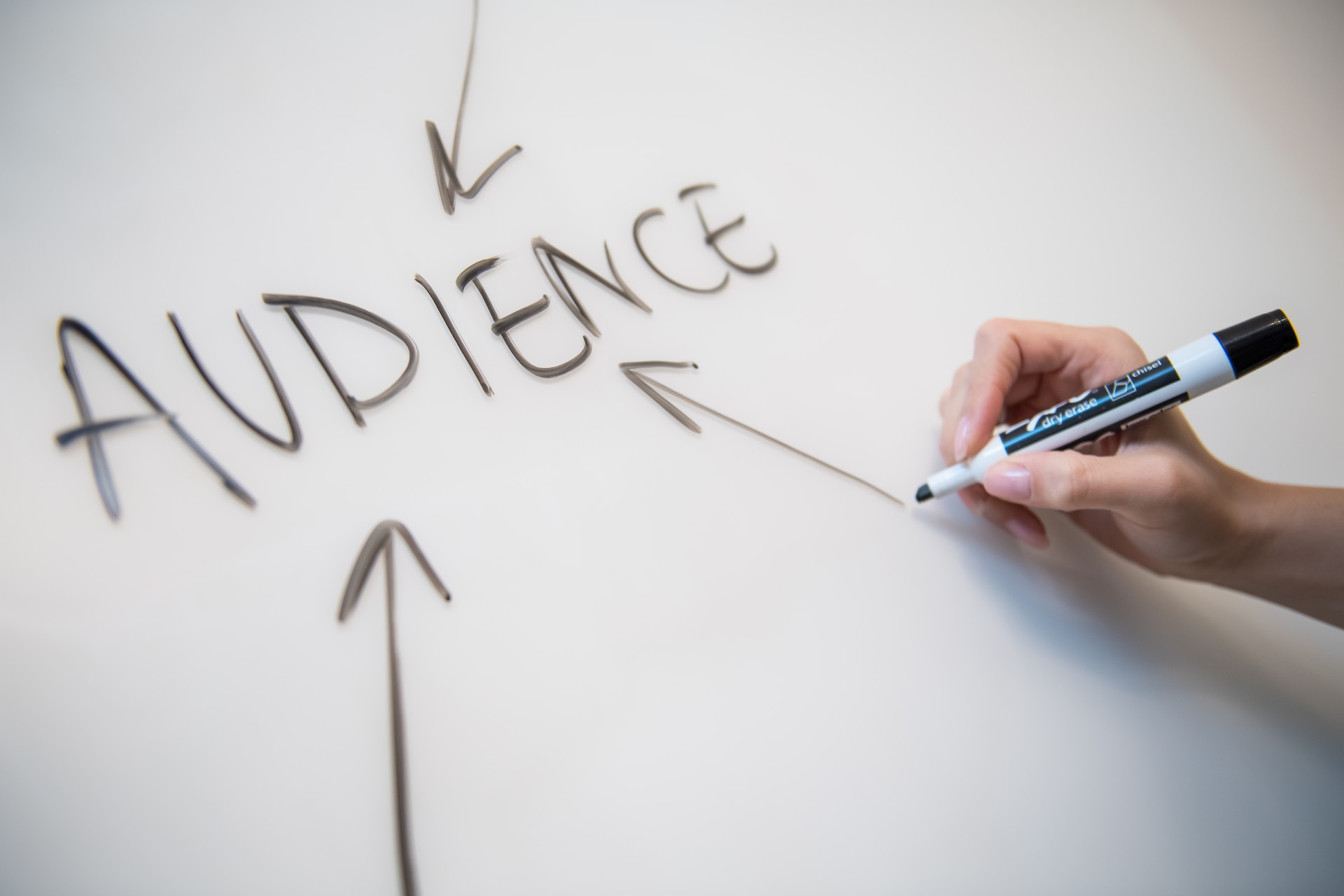When we write a song, when we sing, play an instrument or, especially, when we record and present a musical proposal, a more or less mysterious question often arises: Who is our audience?

Because what we almost always call an audience is something gigantic and varied. Any ear, any brain, any person can be considered an audience, a potential listener, a fan, even, as whatever you want, really. But our lyrics, melodies, harmonies, our compositions as a whole are not going to enter all those ears, far from it. And, even if we managed to make it so, we would receive a huge variety of responses: pleasure, adoration, rejection, contempt, indifference, … So, let's talk a little about the audience, the public and how we can identify or recognize our like-minded listeners, at least, in the immensity of the musical proposals of the 21st century.
Audience and Public
In the vast musical universe, the terms “audience” and “public” are often used interchangeably, but are they really synonyms? At first glance, we might think so, but when we delve into their nuances, we find subtle but significant differences. The “audience” is that immense and diverse sea of ears that can listen to our music. It is that set of people who, by chance or fate, stumble upon our melodies on the radio, in a playlist or at an open-air concert. They do not necessarily know our name or our story, but at that moment, they are part of our audience. On the other hand, the “public” is more select. They are those who, in some way, have connected with our musical proposal. They may have actively sought out our music, bought an album or even attended several of our concerts. The public is that audience that has decided to stay, that feels an affinity with what we express through our notes and lyrics. Throughout history, these concepts have evolved. In the past, audiences were those who physically attended a concert or performance, whereas today, in the digital age, audiences can be scattered across the globe, listening through one device. Understanding this distinction is essential for any artist. While audiences give us an idea of our reach, it is audiences that give us a reason to keep creating. It is with them that we truly connect and who ultimately define our musical legacy.
The spectrum of the audience
Music, with its transcendental power, has the ability to cross boundaries and touch the soul of the listener. But how do we define those who listen to us? This is where the audience spectrum comes in. On the one hand, we have the general audiencethat vast ocean of listeners who stumble upon our music by chance. They may be people who discover us while changing stations on the radio, or those who hear one of our songs in the back of a coffee shop. This audience is broad, diverse, and often ephemeral. They don't have a deep connection with our music, but in that instant, they are part of our sound world. In contrast, the specific audience It is more intimate. These are the ones who consciously seek out our music, add it to their favorite playlists, or share it with friends. This audience has a particular taste, an affinity with our style and message. They are more likely to become our loyal audience, those who will follow us throughout our journey. Understanding this spectrum is vital. While the general audience gives us visibility and introduces us to new ears, it is the specific audience that truly resonates with our specific vision and values, thus becoming the cornerstone of our musical journey.

Identifying our audience
In the vast musical landscape, finding those who resonate with our essence can seem like a titanic task. However, it is a search that is undoubtedly worth undertaking. Because, at the end of the day, it is that audience that gives us life, that inspires us to continue creating. characteristics of an affinity listener They go beyond simple musical tastes. These are people who connect with our message, who feel every chord as if it were their own, who find refuge in our lyrics. They are those who, when listening to a song, feel that it was written just for them. To identify this audience, it is essential to pay attention. Observe reactions at concerts, read comments on streaming platforms, or even have direct conversations on social networks. These interactions offer us valuable clues about who they are and what they are looking for. In addition, there are tools and techniques We have modern tools that allow us to analyze data and listening patterns. These give us a clearer picture of our target audience, allowing us to adapt and fine-tune our musical proposition. On this journey of self-discovery, it is crucial to remember that we are not looking to please everyone, but to connect deeply with those who truly value our essence. It is with them that we will build unforgettable stories and memories. I repeat. Not getting lost in the sea of opinions is key. While it is important to listen and consider feedback, we must remember that our music is, above all, an expression of our being. We cannot, and should not, try to please everyone. Instead, let us seek to connect with those who truly appreciate and understand our essence, because they are the ones who will give true meaning to our work.

The Importance of Authenticity
In a world flooded with melodies, rhythms and voices, authenticity stands as the beacon that guides listeners to our music. It is that hallmark, that unmistakable essence that sets us apart from the rest and connects us with those who seek something more than just notes. Being true to oneself It's not just a matter of artistic integrity, but also an invitation to listeners to embark on a genuine journey with us. In a sea of shifting trends and passing fads, authenticity becomes our compass, pointing the way to an audience that values sincerity above all else. Of course, this doesn't mean we shouldn't adapt to trends or exploring new styles. Evolution is natural and necessary. However, this adaptation must come from a place of truth, not as a desperate attempt to fit in or gain popularity. Authenticity attracts. When we are genuine in our music, we create a bond of trust with the audience. They can feel the passion, the pain, the joy, and all the emotions we pour into our work. And it is this commitment to truth that, at the end of the day, builds a loyal and passionate fan base, those who will accompany us on every note of our musical journey.
Strategies to Connect with the Right Audience
In the digital age, where notes flow freely through wires and airwaves, connecting with the right audience has become an art in itself. It is not enough to create; it is essential to know how and where to present our music. use of social networks has established itself as a powerful tool. These platforms not only allow us to share our music, but also to build a narrative, tell our story and, most importantly, interact directly with our listeners. A simple comment or response can strengthen the bond with a fan, transforming a simple listen into a lasting relationship. streaming platformson the other hand, offer us a window to the world. Through them, we can reach ears in places we never imagined. It is essential to learn how to use these tools, understand their algorithms and know how to stand out from the crowd.

However, in the midst of this digital revolution, we must not forget the power of the live experience. concerts They remain one of the most effective ways to connect with an audience. The shared energy, the eye contact, the feeling of the music vibrating in the air – it all creates an unparalleled experience that can turn a simple listener into a lifelong fan.
Conclusions
In short, musical expression, lyrics, dreams and expectations, success and failure, fame, money, visibility, presence, relevance, … so many things mixed in this simple, ancient, profound art… Writing songs, singing, moving us. Musical history is full of melodies that have resonated in the hearts of generations and others that, unfortunately, have been lost in the wind. The best experiences often have in common a combination of authenticity, innovation and a deep emotional connection. Artists who, despite adversity or changing trends, have managed to stay true to their essence, adapting without losing their identity. They are those who have understood their audience, who have known where and how to present their music, and who have built lasting relationships with their listeners. On the other hand, other situations show us experiences that were not so fortunate. Maybe they were artists who blindly chased trends, losing their authenticity in the process. Or those who, despite having undeniable talent, did not know how to reach their target audience. These stories, though painful, are equally instructive. This applies to the songwriter, the performer, and the artist in every aspect. Both cases teach us that success is not measured only in sales or plays, but in the ability to leave a mark on the hearts of listeners. Write songs, show your particular vision of the world, make your unique and recognizable voice heard: your audience is waiting for you. #mailpoet_form_3 .mailpoet_form { } #mailpoet_form_3 .mailpoet_column_with_background { padding: 10px; } #mailpoet_form_3 .mailpoet_form_column:not(:first-child) { margin-left: 20px; } #mailpoet_form_3 .mailpoet_paragraph { line-height: 20px; margin-bottom: 20px; } #mailpoet_form_3 .mailpoet_segment_label, #mailpoet_form_3 .mailpoet_text_label, #mailpoet_form_3 .mailpoet_textarea_label, #mailpoet_form_3 .mailpoet_select_label, #mailpoet_form_3 .mailpoet_radio_label, #mailpoet_form_3 .mailpoet_checkbox_label, 3 .mailpoet_list_label, #mailpoet_form_3 .mailpoet_date_label { display: block; font-weight: normal; } #mailpoet_form_3 .mailpoet_text, #mailpoet_form_3 .mailpoet_textarea, #mailpoet_form_3 .mailpoet_select, #mailpoet_form_3 .mailpoet_date_month, #mailpoet_form_3 .mailpoet_date_day, #mailpoet_form_3 .mailpoet_date_year, #mailpoet_form_3 .mailpoet_date { display :block; } #mailpoet_form_3 .mailpoet_text, #mailpoet_form_3 .mailpoet_textarea { width: 200px; } #mailpoet_form_3 .mailpoet_checkbox { } #mailpoet_form_3 .mailpoet_submit { } #mailpoet_form_3 .mailpoet_divider { } #mailpoet_form_3 .mailpoet_message { } #mailpoet_form_3 .mailpoet_form_loading { width: 30px; text-align: center; line-height: normal; } #mailpoet_form_3 .mailpoet_form_loading > span { width: 5px; height: 5px; background-color: #5b5b5b; }#mailpoet_form_3{border: 1px solid #fcb900;border-radius: 40px;text-align: center;}#mailpoet_form_3 form.mailpoet_form {padding: 20px;}#mailpoet_form_3{width: 70%;}#mailpoet_form_3 .mailpoet_message {margin: 0; padding: 0 20px;}#mailpoet_form_3 .mailpoet_paragraph.last {margin-bottom: 0} @media (max-width: 500px) {#mailpoet_form_3 {background-image: none;}} @media (min-width: 500px) {#mailpoet_form_3 .last .mailpoet_paragraph:last-child {margin-bottom: 0}} @media (max-width: 500px) {#mailpoet_form_3 .mailpoet_form_column:last-child .mailpoet_paragraph:last-child {margin-bottom: 0}} Please leave this field emptyDo you write songs or would you like to?
Email * I have read and accept the Privacy Policy With the Guide «The journey of a song» Gift Check your inbox or spam folder to confirm your subscription.

